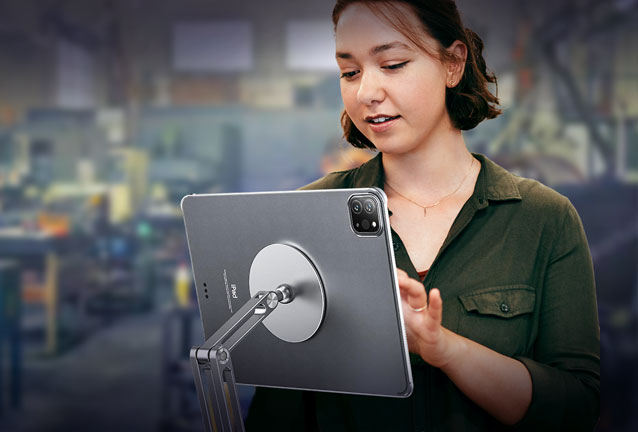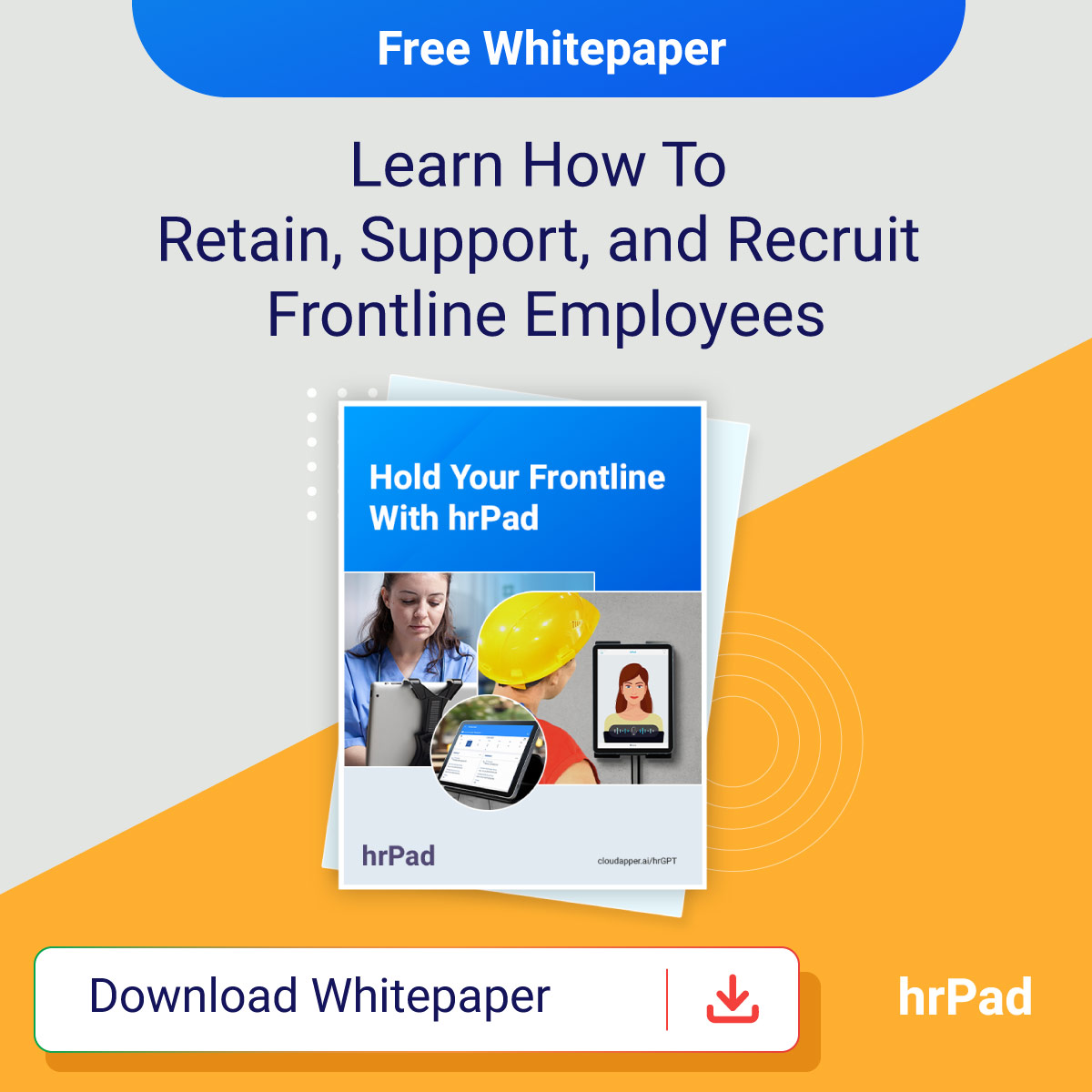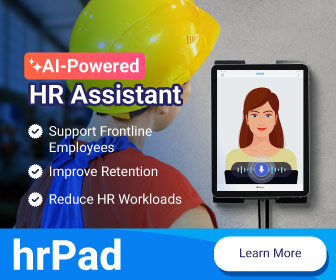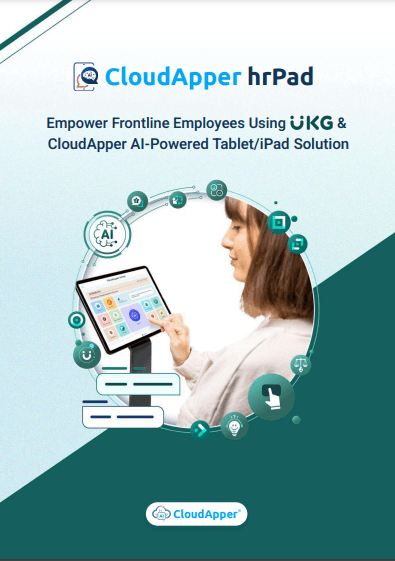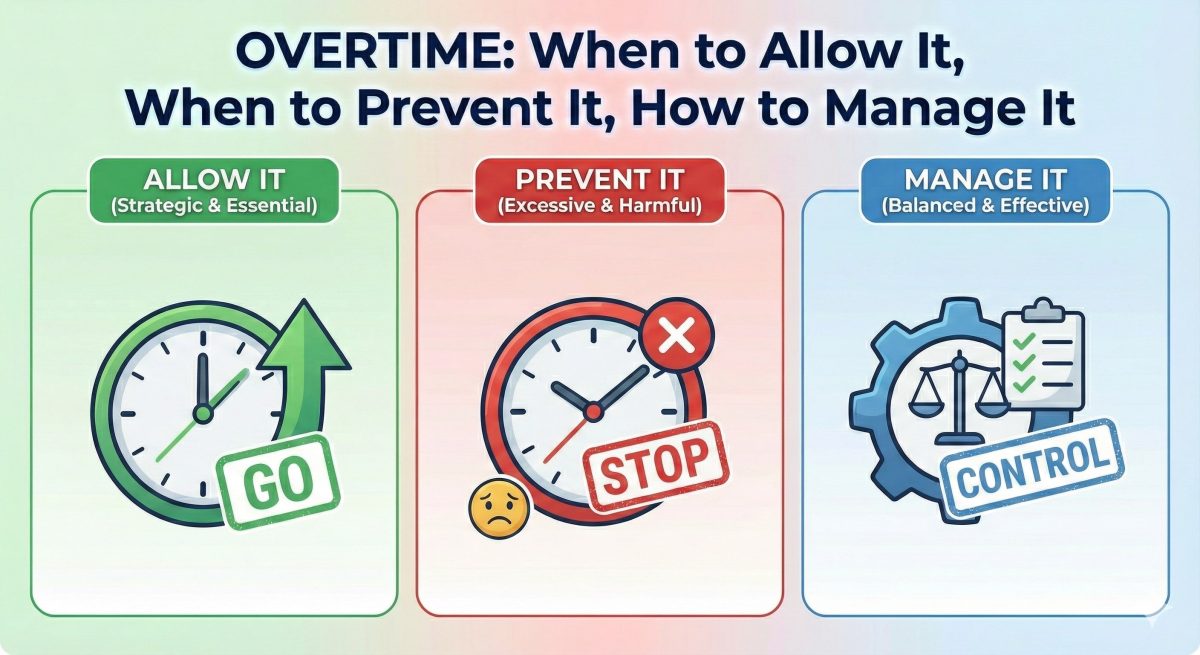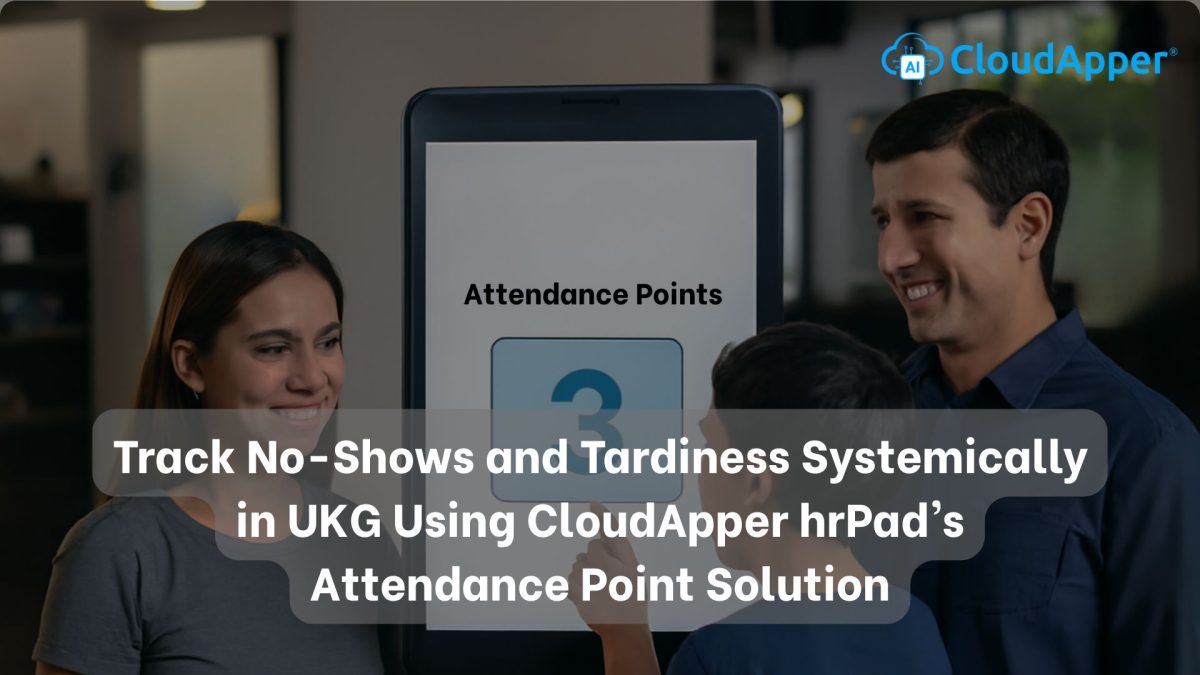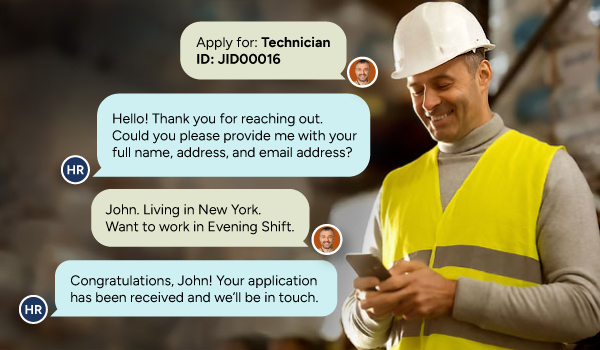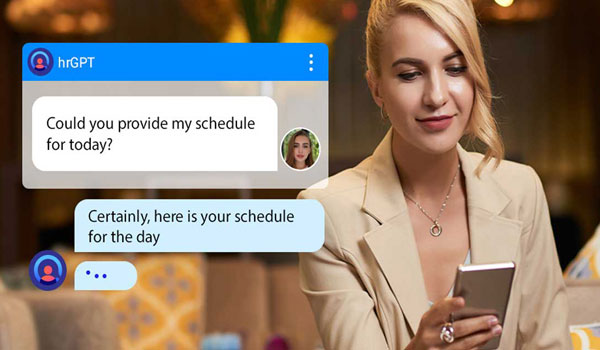CloudApper hrPad enhances UKG Pro multi-location scheduling through extensive customization capabilities. Configure custom approval workflows, personalized employee experiences, location-specific rules, and industry-tailored solutions without coding. Transform scheduling into a strategic advantage that improves engagement, efficiency, and compliance while maintaining seamless UKG Pro integratio
Table of Contents
TL;DR
CloudApper hrPad offers extensive customization capabilities that enhance UKG Pro’s multi-location scheduling. Organizations can configure custom approval workflows, personalized mobile experiences, location-specific rules, and industry-tailored solutions without coding. This flexibility transforms scheduling from an administrative burden into a strategic advantage that improves employee engagement, operational efficiency, and compliance while maintaining seamless UKG Pro integration.
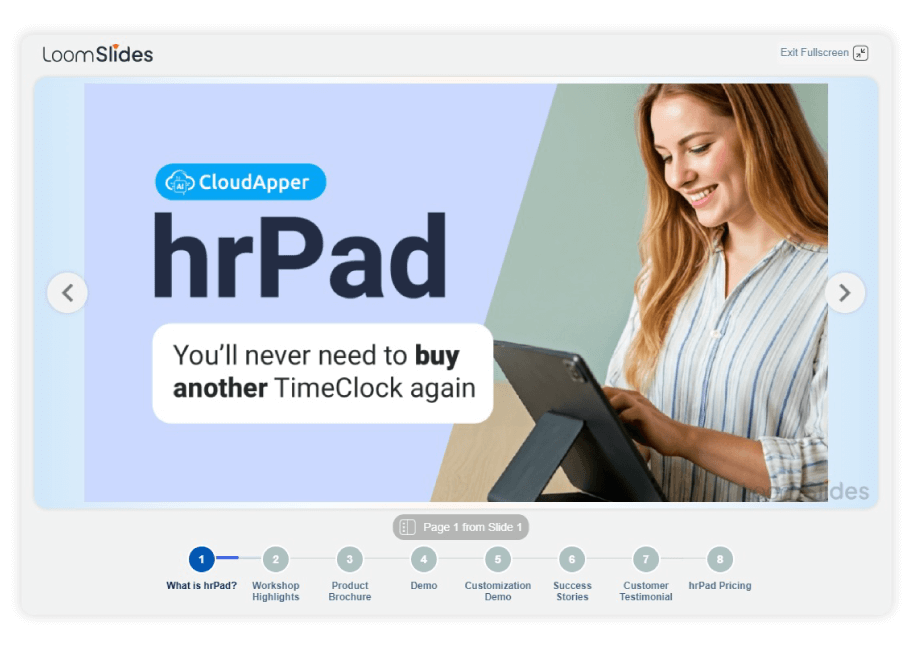
For more information on CloudApper hrPad for UKG visit our page here.
Every organization has unique scheduling requirements shaped by their industry, workforce composition, operational model, and business objectives. While UKG Pro provides a powerful and comprehensive scheduling platform, the diverse needs of multi-location operations often require additional customization to truly optimize workforce flexibility. This is where CloudApper hrPad distinguishes itself—offering extensive customization capabilities that adapt to specific organizational workflows without compromising the integrity of UKG Pro’s core scheduling engine.
This article explores how organizations can leverage CloudApper hrPad‘s customization framework to create tailored multi-location scheduling solutions that address their unique operational challenges while enhancing employee experience and managerial efficiency.
Understanding the Customization Imperative
Multi-location scheduling is rarely one-size-fits-all. A retail chain with fifty stores has vastly different requirements than a healthcare system with ten clinics. Even within the same industry, organizational culture, employee demographics, union agreements, and operational philosophies create distinct scheduling needs.
UKG Pro accommodates much of this diversity through its configuration options and rule engines. However, the employee-facing experience—how workers interact with schedules, request changes, and communicate availability—often requires deeper customization to truly resonate with front-line teams. CloudApper hrPad provides this customization layer, enabling organizations to create scheduling interfaces and workflows that feel purpose-built for their specific environment while maintaining seamless integration with UKG Pro’s scheduling foundation.
Customizable Shift Exchange Workflows
One of the most powerful customization opportunities within CloudApper hrPad centers on shift exchange processes. Different organizations have dramatically different philosophies about how employees should swap shifts, pick up additional hours, or offer shifts they cannot work.
Tailoring Approval Hierarchies
CloudApper hrPad allows organizations to define custom approval workflows that reflect their management structure and decision-making philosophy. Some organizations prefer a streamlined approach where employees can directly swap shifts with qualified colleagues without managerial approval, as long as both parties hold the required certifications and the exchange doesn’t violate labor rules. Others require supervisor review for every schedule change, regardless of circumstances.
Through CloudApper hrPad‘s no-code workflow builder, organizations can create multi-tiered approval processes that route shift requests based on specific criteria. For example, a retail organization might configure the system so that shift swaps within the same location require only supervisor notification, while cross-location swaps need district manager approval. A healthcare system might require department head approval for any swap involving weekend shifts but allow automatic approval for weekday exchanges.
These customized workflows integrate directly with UKG Pro’s organizational hierarchies and approval chains, ensuring that schedule changes flow through appropriate channels while maintaining data integrity and audit trails.
Defining Eligibility and Qualification Rules
CloudApper hrPad enables organizations to establish custom rules that determine which employees can pick up which shifts. These rules can be as simple or complex as organizational needs dictate.
A food service company might configure the system to only show kitchen shifts to employees with food handler certifications and front-of-house shifts to those with customer service experience. A healthcare organization could restrict certain shift offerings to nurses with specific credentials or minimum experience levels. A retail chain might create rules that prevent part-time employees from picking up shifts that would push them into overtime or full-time classification.
Organizations can also customize how the system handles shift preferences and prioritization. Some businesses operate on a first-come-first-served basis for open shifts, while others prioritize employees based on seniority, performance metrics, or hours worked. CloudApper hrPad’s customization framework supports all these approaches, allowing organizations to encode their unique fairness and allocation philosophies directly into the scheduling experience.
Personalizing Employee Mobile Experiences
The mobile interface through which employees interact with scheduling represents a critical touchpoint for engagement and satisfaction. CloudApper hrPad provides extensive options for customizing this experience to align with organizational branding, communication styles, and user preferences.
Configurable Dashboard Views
Organizations can customize what employees see when they open the CloudApper hrPad mobile app. Some businesses prefer to emphasize upcoming shifts and schedule reminders, placing this information prominently on the home screen. Others prioritize available shift opportunities, making it easy for employees to quickly browse and claim additional hours.
The dashboard can be configured to display location-specific information, such as parking instructions, site-specific safety reminders, or local team announcements. For organizations with employees who regularly work at multiple locations, the interface can be customized to automatically highlight which location they’re scheduled at next and provide relevant details like site address, manager contact information, and any location-specific protocols.
Custom Notification Preferences
CloudApper hrPad‘s notification system can be extensively customized to match organizational communication preferences and employee needs. Organizations can define notification triggers, timing, frequency, and content to ensure employees receive the right information at the right time without experiencing alert fatigue.
For instance, a hospitality company might configure the system to send shift reminders 24 hours before scheduled shifts, notify employees immediately when new shifts at their preferred locations become available, and send daily summaries of upcoming weekly schedules. A retail organization might add notifications for schedule changes, shift swap approvals, and urgent coverage needs that match employee availability.
Employees can typically personalize their own notification preferences within parameters set by the organization. Some workers might want to receive alerts about every open shift, while others only want notifications for specific locations, days of the week, or shift types. CloudApper hrPad accommodates these varying preferences while ensuring critical communications always reach their intended recipients.
Branded User Experience
Organizations can customize CloudApper hrPad‘s visual presentation to reflect corporate branding, creating a cohesive experience that feels like a natural extension of the organization’s ecosystem. Custom color schemes, logos, and terminology help employees immediately recognize the tool as part of their employer’s technology suite rather than a third-party application.
This branding extends beyond aesthetics to include language and terminology customization. Organizations can replace generic terms like “shift swap” or “open shift” with internal terminology that resonates with their workforce. A hospital might use “coverage request” instead of “shift swap,” while a restaurant chain might refer to “extra hours” rather than “additional shifts.”
Location-Specific Customization Strategies
Multi-location operations often face the challenge of balancing standardization with local flexibility. CloudApper hrPad enables organizations to establish consistent processes across their entire footprint while accommodating location-specific nuances.
Regional Scheduling Rules
Organizations can configure location-specific scheduling rules that reflect regional differences in labor regulations, operational needs, or workforce characteristics. A retail chain operating across multiple states might implement different break policies, overtime thresholds, or scheduling notice periods based on state labor laws. CloudApper hrPad can enforce these varying requirements automatically, ensuring compliance while maintaining a unified scheduling interface.
Seasonal operations present another opportunity for location-specific customization. A hospitality company with both beach resort and ski resort properties might configure entirely different shift availability patterns, staffing rules, and employee preferences based on each location’s seasonal peak periods. CloudApper hrPad can automatically adjust what employees see and how shifts are offered based on the time of year and location characteristics.
Site-Specific Shift Categories
Different locations within the same organization often have unique operational requirements that don’t fit standardized shift templates. CloudApper hrPad allows organizations to define custom shift categories, roles, and requirements at the location level while maintaining enterprise-wide visibility and reporting.
A healthcare system might have specialized shifts at their imaging center that don’t exist at primary care clinics. A retail organization might have flagship stores with specialized departments requiring unique staffing configurations. CloudApper hrPad accommodates these variations while ensuring that employees with appropriate qualifications can discover and claim these specialized shifts across the organization.
Customizing Manager Oversight and Controls
Just as employee experiences vary by role and preference, managers across different locations often need customized tools that reflect their specific oversight responsibilities and decision-making authority.
Configurable Approval Authorities
CloudApper hrPad allows organizations to define which managers can approve which types of scheduling actions. A store manager might have authority to approve any shift changes within their location but require district manager involvement for cross-location transfers. Department supervisors might approve shift swaps within their teams but need location manager approval for shifts that would trigger overtime.
These approval authorities can be configured based on multiple factors including shift timing, employee classification, labor cost implications, and business priority. Organizations can create complex but automated decision trees that route requests to appropriate decision-makers without requiring employees or front-line managers to navigate approval hierarchies manually.
Custom Management Dashboards
Managers overseeing multiple locations need visibility tailored to their specific portfolio and priorities. CloudApper hrPad enables organizations to create custom management dashboards that surface the most relevant information for different managerial roles.
A regional manager might see aggregated metrics across all locations, highlighting coverage gaps, pending approval requests, and labor cost trends. A location manager might see detailed staff-level information for their site, including individual employee schedules, time-off requests, and availability changes. A department supervisor might focus on their specific team’s scheduling within a larger location.
These dashboards can be configured to prioritize different metrics based on organizational focus areas. Some businesses emphasize labor cost management and schedule efficiency, while others prioritize employee satisfaction indicators like schedule predictability and request approval rates. CloudApper hrPad’s customization framework supports all these approaches.
Integration Customization with UKG Pro
The integration between CloudApper hrPad and UKG Pro itself offers extensive customization opportunities that ensure data flows seamlessly while respecting organizational preferences and requirements.
Custom Data Synchronization Rules
Organizations can define precisely what scheduling data synchronizes between UKG Pro and CloudApper hrPad, how frequently synchronization occurs, and what actions trigger immediate updates. Some businesses prefer near-real-time synchronization where any schedule change in UKG Pro immediately appears in CloudApper hrPad. Others prefer scheduled synchronization at specific intervals to manage system load or accommodate batch processing workflows.
The synchronization rules can be customized to handle different data types differently. Schedule information might sync continuously, while employee profile updates occur nightly. Location details might sync only when explicitly changed, while shift availability refreshes hourly during peak scheduling periods.
Custom Field Mapping
Organizations often extend UKG Pro with custom fields that capture business-specific information relevant to scheduling decisions. CloudApper hrPad can be configured to recognize and utilize these custom fields, ensuring that unique organizational data flows appropriately between systems.
For example, a retail organization might maintain custom certification fields in UKG Pro for specialized product knowledge or equipment operation. CloudApper hrPad can be configured to consider these certifications when determining shift eligibility, displaying relevant qualifications to managers during approval processes, and filtering available shifts for employees.
Tailored Business Rule Enforcement
Organizations can configure CloudApper hrPad to enforce custom business rules that extend beyond standard UKG Pro scheduling constraints. These might include rules around maximum consecutive days worked, minimum rest periods between shifts at different locations, restrictions on certain shift combinations, or requirements for specific skill mixes during particular shifts.
These custom rules operate alongside UKG Pro’s scheduling engine, providing an additional layer of organizational policy enforcement at the point of employee interaction. When an employee attempts to pick up a shift that would violate these custom rules, CloudApper hrPad can either block the action with an explanatory message or route it for special approval, depending on organizational preference.
Industry-Specific Customization Examples
Retail Customization
Retail organizations using CloudApper hrPad often customize the platform to accommodate peak shopping periods, seasonal hiring, and the unique dynamics of store-based operations. Common customizations include:
- Holiday scheduling workflows that automatically increase shift availability during peak retail periods while managing employee fatigue through maximum hours rules
- Department-specific shift categorization that ensures employees only see opportunities matching their trained departments (apparel, electronics, checkout, etc.)
- Customer traffic-based notifications that alert employees to urgent coverage needs when unexpected traffic surges occur
- Visual merchandising team coordination that allows specialized employees to easily schedule work across multiple stores for display updates and promotional setups
Healthcare Customization
Healthcare organizations leverage CloudApper hrPad’s customization capabilities to address complex credential requirements, patient care continuity, and regulatory compliance needs:
- Credential-based shift filtering that automatically shows only shifts matching each employee’s certifications, licenses, and specializations
- Patient assignment continuity rules that prioritize scheduling nurses or therapists with specific patients across multiple shifts
- Call schedule integration that coordinates on-call responsibilities with regular shift scheduling across multiple facilities
- Regulatory compliance alerts that warn employees and managers when schedule changes might create compliance issues with rest periods, maximum hours, or mandatory coverage requirements
Hospitality Customization
Hotels, restaurants, and entertainment venues customize CloudApper hrPad to manage the unique demands of hospitality operations:
- Event-driven shift creation that automatically generates and broadcasts shift opportunities when special events, banquets, or group bookings are scheduled
- Tip-eligible shift prioritization that ensures fair distribution of potentially higher-earning shifts across qualified employees
- Cross-property scheduling that allows hotel employees to work at different properties within a brand or management company while maintaining consistent benefits and seniority
- Seasonal transition workflows that manage the complex process of ramping up or down staffing as properties move between peak and off-peak seasons
Implementation and Customization Approach
Deploying CloudApper hrPad with extensive customization doesn’t require lengthy implementation timelines or extensive technical resources. The platform’s no-code customization framework enables HR, operations, and IT teams to collaboratively configure the solution to meet organizational needs.
Discovery and Requirements Gathering
Successful customization begins with understanding organizational workflows, pain points, and priorities. This discovery process typically involves interviewing managers at different levels, surveying employees about their scheduling challenges, and analyzing existing scheduling patterns and issues within UKG Pro.
Organizations often discover that what initially seemed like a technology problem is actually a workflow or communication challenge. CloudApper hrPad‘s customization capabilities allow businesses to address these underlying issues rather than simply digitizing existing inefficient processes.
Iterative Configuration and Testing
CloudApper hrPad’s customization typically follows an iterative approach. Organizations start with core configurations that address primary use cases, deploy to a pilot group, gather feedback, and refine the configuration before enterprise-wide rollout.
This iterative process allows organizations to validate that customizations truly address intended needs and don’t create unintended consequences. Employees and managers in pilot groups provide valuable insights that shape final configurations, ensuring the solution resonates with end users.
Ongoing Optimization
Customization isn’t a one-time implementation activity. As organizations evolve, operational needs change, and new opportunities emerge, CloudApper hrPad’s configurations can be adjusted to reflect these dynamics. The no-code customization tools mean that organizations can make adjustments without vendor involvement or development projects, enabling rapid response to changing needs.
Many organizations establish regular review cycles where they assess scheduling metrics, gather user feedback, and refine CloudApper hrPad customizations to drive continuous improvement in multi-location scheduling efficiency and employee satisfaction.
Measuring Customization Success
The value of CloudApper hrPad customization manifests in measurable improvements across multiple dimensions:
Employee engagement metrics improve as scheduling becomes more accessible and responsive to individual preferences. Organizations typically see increases in schedule satisfaction scores and decreases in scheduling-related grievances.
Operational efficiency gains become evident through reduced managerial time spent on schedule coordination, faster fulfillment of open shifts, and decreased reliance on premium labor costs for last-minute coverage.
Compliance improvements result from automated enforcement of custom business rules and regulatory requirements, reducing exposure to wage and hour violations or union agreement breaches.
Retention benefits emerge as employees appreciate the flexibility and control enabled by customized scheduling tools, with many organizations reporting improved turnover rates among employees who actively use CloudApper hrPad.
Creating Your Ideal Scheduling Solution for UKG Pro
The combination of UKG Pro’s robust scheduling engine and CloudApper hrPad’s extensive customization capabilities enables organizations to create multi-location scheduling solutions that truly fit their unique needs. Rather than adapting workflows to accommodate system limitations, organizations can configure CloudApper hrPad to support their ideal scheduling processes while maintaining the data integrity, compliance controls, and reporting capabilities that UKG Pro provides.
For organizations seeking to optimize multi-location scheduling, the path forward involves thoughtful customization that reflects operational realities, employee preferences, and strategic priorities. CloudApper hrPad provides the framework and tools to make this customization accessible, maintainable, and continuously improvable—transforming multi-location scheduling from an administrative burden into a strategic advantage that attracts talent, improves efficiency, and supports organizational growth.
FAQ Section
Frequently Asked Questions About Customizing UKG Pro Multi-Location Scheduling
Q: Can CloudApper hrPad be customized without technical expertise?
A: Yes, CloudApper hrPad features a no-code customization framework that allows HR, operations, and IT teams to configure workflows, approval processes, and user experiences without programming knowledge. The intuitive interface enables organizations to customize scheduling rules, notification preferences, and mobile experiences through drag-and-drop tools and visual configuration options.
Q: How does CloudApper hrPad maintain data integrity with UKG Pro during customization?
A: CloudApper hrPad integrates with UKG Pro through secure APIs, maintaining UKG Pro as the system of record for all scheduling data. All customizations operate as an enhancement layer that pulls data from and pushes updates back to UKG Pro, ensuring seamless synchronization while preserving data integrity, audit trails, and compliance controls.
Q: What types of approval workflows can be customized in CloudApper hrPad?
A: Organizations can create multi-tiered approval workflows based on shift type, location, employee classification, labor cost implications, and business priorities. Examples include automatic approvals for same-location swaps, manager review for cross-location transfers, department head approval for weekend shifts, and escalation workflows for overtime-triggering requests.
Q: Can customizations be different for each location in a multi-location operation?
A: Yes, CloudApper hrPad supports location-specific customizations while maintaining enterprise-wide visibility. Organizations can configure different scheduling rules, shift categories, break policies, and operational requirements for each location to accommodate regional labor laws, seasonal operations, or site-specific needs while keeping a unified scheduling interface.
Q: How long does it take to implement customized CloudApper hrPad solutions?
A: Most organizations complete CloudApper hrPad implementation within weeks using an iterative approach. The process typically involves discovery and requirements gathering, core configuration, pilot deployment, feedback collection, refinement, and enterprise-wide rollout. The no-code framework enables rapid customization without lengthy development cycles.
Q: Can employees customize their own CloudApper hrPad experience?
A: Yes, within parameters set by the organization, employees can personalize notification preferences, dashboard views, and shift preferences. Workers can choose which types of shifts they want to be notified about, set preferred locations, specify availability patterns, and customize how scheduling information is displayed on their mobile devices.
Q: What industries benefit most from CloudApper hrPad customization?
A: Retail, healthcare, hospitality, and food service industries see significant benefits. Retailers customize for seasonal demands and department-specific shifts, healthcare organizations configure credential-based filtering and compliance rules, hospitality businesses tailor event-driven scheduling, and food service operations customize for multi-location coverage and certification requirements.
Q: Can customizations be changed after initial implementation?
A: Absolutely. CloudApper hrPad’s no-code customization tools allow organizations to continuously optimize configurations as needs evolve. Organizations can adjust workflows, modify rules, update notification preferences, and refine approval processes without vendor involvement or development projects, enabling rapid response to changing business requirements.






